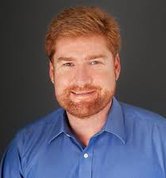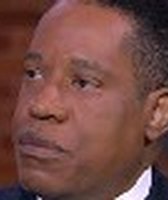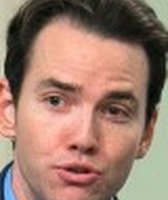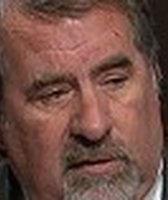Stand up for the facts!
Our only agenda is to publish the truth so you can be an informed participant in democracy.
We need your help.
I would like to contribute
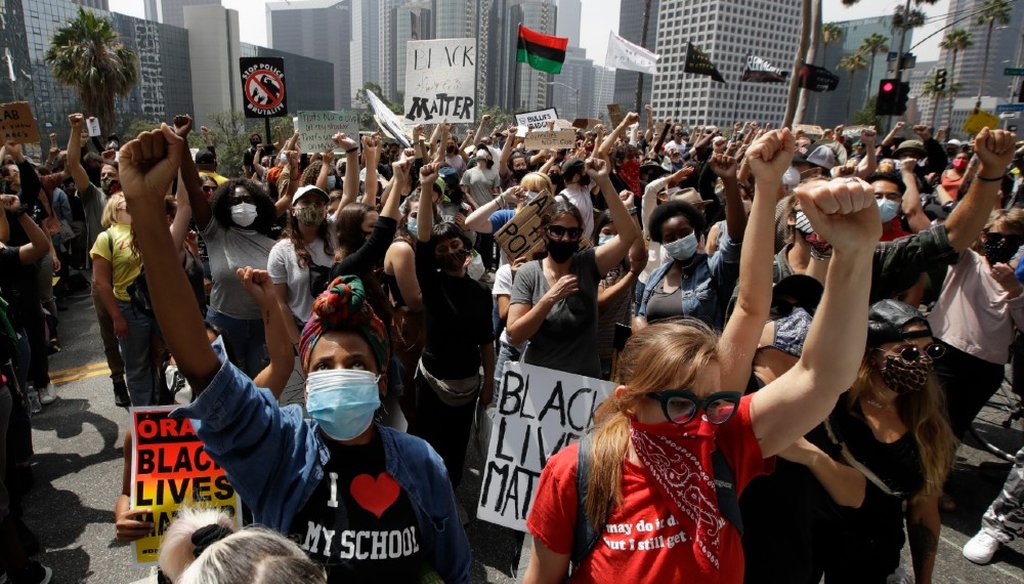
Demonstrators raise their fists during a protest to demand the defunding of the Los Angeles school district police outside of the school board headquarters June 23, 2020, in Los Angeles. (AP)
If Your Time is short
- The Los Angeles mayor and the county’s top health director have acknowledged a connection between protests and the region’s increased COVID-19 cases.
-
Some claims on social media blame the protests for LA’s surge in infections.
-
Medical experts say there’s not enough contact tracing data to definitely say how much LA’s demonstrations contributed.
-
The experts also say the spread of the virus in LA was already growing before the protests started as businesses reopened and family gatherings resumed.
Demonstrators calling for racial justice packed the streets of Los Angeles this spring, as they did in cities across the globe following the police killing of George Floyd in Minneapolis.
But how much, exactly, did the demonstrations in L.A. — where many people wore face coverings, but also chanted and crowded together for hours — contribute to the region’s now surging COVID-19 infections?
The spike in cases pushed LA Mayor Eric Garcetti on Sunday to warn the city "is on the brink" of issuing a new stay-at-home order.
The question about a link between the protests and increased infections gained renewed significance for some last week as Gov. Gavin Newsom ordered sweeping closures of non-essential businesses statewide and prohibited most schools from re-opening their campuses at the start of the fall semester.
Reacting to Newsom’s mandates, conservative groups and a prominent GOP state lawmaker suggested the crowds at the demonstrations are to blame for the surge in Los Angeles and across the state — and not the churches, restaurants, salons and other businesses that were forced to shutter.
These claims caught our attention, and so did a reader’s question asking Politifact California to examine whether there’s a connection.
The claims by the conservative groups are far from scientific and go against the general findings of a National Bureau of Economic Research working paper, which has yet to be peer reviewed but found protests did not lead to a jump in cases in most large cities across the United States, though it did not evaluate Los Angeles.
To learn more about how L.A.’s protests might have contributed, we spoke with infectious disease experts and reviewed public briefings by L.A. County officials.
Los Angeles Mayor Eric Garcetti and Los Angeles County Public Health Director Barbara Ferrer have both acknowledged a link between the events.
Still, health experts said, figuring out just how deep that connection goes is no simple matter.
With a population of 10 million, Los Angeles County is home to one quarter of the state’s residents. But it’s been hit disproportionately hard by COVID-19. The county’s more than 159,000 cases represented 40% of the state’s 391,000 as of Tuesday.
Meanwhile, its 4,104 deaths accounted for more than half the state’s 7,694 fatalities.
The county averaged more than 3,200 new infections and 42 deaths each day last week. The number of confirmed cases is doubling every 28.5 days, according to a recent analysis by the Los Angeles Times.
"We are in an alarming and dangerous phase in this pandemic here in L.A. County and we're in this place along with 29 other counties across the state," County Public Health Director Barbara Ferrer said at a press briefing on July 15.
Reporters have asked Ferrer and Garcetti repeatedly whether there’s a connection between the protests and the spike.
At a news conference on July 1, Garcetti told reporters "we do believe there is a connection" between the protests and virus spread in Los Angeles, after initially saying there was no conclusive evidence linking the two.
Garcetti pointed to comments from Ferrer, who told reporters on June 22: "It’s highly likely given the increased numbers that we’re seeing that some of this is in fact people who may have been in a crowded situation at one of the protests where there was spread."
She noted at the time, however, that because they were receiving such a high volume of cases they had not been able to "really pinpoint whether or not the exact source of an exposure was at protests."
Ferrer said the county’s most complete information came from worksites and institutions, but was more fragmented for cases from parties, dinners and marches.
We wanted to know whether officials had compiled more complete information since late June.
The county’s health department, however, did not respond to multiple requests for the number of people who, when reached by contact tracers following up on positive COVID-19 cases, reported being at one of the protests within two weeks of starting to show symptoms.
Asked to elaborate on Ferrer’s comment that it’s "highly likely" that protests contributed to some of the spread of COVID-19, a county health spokesperson pointed to other possible ways the virus may have spread this spring and early summer: "The same crowded conditions exist in bars and restaurants [both are indoors with perhaps greater risk], and at large social gatherings where people are eating and drinking with each other [no face coverings] in a crowded setting."
On Facebook, Republican state Senate leader Shannon Grove of Bakersfield suggested the protests are, at least in part, to blame for the surge in COVID-19 cases.
She posted several photos of demonstrators holding Black Lives Matter signs and included Newsom’s comment on June 1 to protesters, saying: "To those who want to express themselves. ... God bless you. Keep doing it. Your rage is real."
Grove’s post reads in part: "SHOW CALIFORNIANS THE DATA that says it’s the business community and the faith community and not what you see in these photographs !!!!! Our request is not unreasonable. Based on the Governors statement - he supports the protesting but is shutting down the business and faith community for the uptick in covid cases - Show us the data !!!!!"
State Senator Shannon Grove, R-Bakersfield, published this Facebook post on July 14.
A recent tweet from Prager University on Monday shows a large crowd of people at a protest in Hollywood and reads, in part, "This protest was allowed in California. No masks or social distancing required. However, salons, restaurants, retail stores, bars, and many businesses will be forced into bankruptcy."
Prager University describes itself as the creator of "video content that advances Judeo-Christian values," and notes that it is not an accredited academic institution.
In late June, Facebook users flagged a separate and widely shared post that showed crowds of protesters in Los Angeles and suggested the demonstrations, not bars, led to L.A.’s rapid growth in cases.
Erin Mordecai is an assistant professor in biology at Stanford University whose
research focuses on the ecology of infectious disease. She has reviewed virus transmission and mobility data in Los Angeles County since the pandemic started.
Mordecai says it’s difficult to draw a line between any one event and L.A.’s surge in cases. Several factors complicate that, including the fact that the county’s epidemic growth rate — or the rate of new infections each person is causing — was already starting to climb by late April after shrinking following the March stay-at-home order.
"So, even before the protests started, L.A. had a problem," Mordecai said. "The county was already seeing increased growth in the epidemic, and that growth has been pretty consistent."
The professor said infection transmission rates have consistently tracked with the region’s increase in mobility, which researchers can see based on anonymized cell phone data. That data, she said, does not support the theory that the protests caused a surge in cases.
"We didn’t see a jump in transmission immediately after the protests started," Mordecai added. "I think in terms of epidemiological evidence, at least that kind of indirect evidence, we don’t really have that evidence yet."
It’s certainly possible, she said, that transmission could have occurred among those who were not keeping a distance or wearing masks. But there are other factors that likely contributed to the viral spread in Los Angeles and beyond.
"The thing that makes it hard to separate out the effects of the protests versus other factors, is a lot of states were reopening at the same time in late May," Mordecai said. "You had protests, you had Mother’s Day, Memorial Day, businesses starting to reopen. The lockdown has now gone on for three months. People are starting to get restless and anxious."
Nicole Gatto, associate professor in the School of Community and Global Health at Claremont Graduate University in Los Angeles County, agreed the protests presented "an opportunity" for some spread. She added, however, that more data is needed to come to a conclusion.
"I haven’t seen data. I looked to see if I could find any contact tracing data. I have not put my finger on that myself. But that would be one natural place to look," Gatto said.
That data, at least for now, doesn’t appear to be available. In early June, Ferrer said the county’s contact-tracing is very limited when it comes to large outdoor gatherings or protests. Officials simply can’t reach people they don’t know were there. "Nobody knows you were there. No one will call you," Ferrer was quoted as saying in the Los Angeles Times.
In San Diego, thousands of demonstrators also took to the streets in early June. But as of early July, a total of just 29 people who tested positive reported attending a protest within two weeks of starting to show symptoms, according to a San Diego Union-Tribune column. That compares with the county’s 14,500 COVID-19 cases at the time.
San Diego County officials added that no community outbreak so far had been traced to any outdoor activities, including those at beaches, parks and on trails, or protests in May calling for the reopening of the state’s businesses, the Union-Tribune reported.
Health experts in Texas and New York have said their states did not see a surge in COVID-19 cases due to the protests.
"I have not seen any peer-reviewed research linking outdoor protests (or really any major outdoor events) to the surge here in Texas," Rodney Rohde, PhD, an associate dean for research at Texas State’s College of Health Professions who focuses on public health microbiology, told the news publication Healthline.
Jeffrey Shaman, director of Columbia University’s climate and health program, conducted modeling after protests in New York City to determine whether they led to greater transmission. But, he told Healthline, he did not find an increase.
Mordecai, the Stanford professor, acknowledged it’s difficult to do contact-tracing with a protest. Still, she emphasized that it’s important to test people, trace who they’ve been in contact with and, if they went to a protest, figure out which one.
There could be another factor driving L.A.’s surge, Mordecai said. Given that many workers in the gig economy, along with the service and retail sectors had to return to work to pay rent and feed their families, the virus may be spreading in the county’s workplaces.
"There’s only so long that people can stay home," she said. "I think we’re getting at this kind of very ugly truth in our society that there’s a lot of inequality in terms of what types of jobs people work."
That’s in line with what L.A. County health officials reported this week. County Health Officer Dr. Muntu Davis told KABC-TV that food processing companies and distribution facilities such as meatpacking plants, manufacturers, garment factories and wholesale warehouses are most at risk for outbreaks.
He pointed to the recent shutdown of Los Angeles Apparel in South Los Angeles, where more than 300 workers contracted coronavirus, resulting in the death of four people.
Asked whether researchers will ever be able to truly pinpoint the cause, or multiple causes, of L.A.’s outbreak, Gatto said: "That will come back to how complete the data is, to look at this in more of a scientific way."
Los Angeles stands out in that its mayor and the county’s top public health official have both acknowledged a link between the region’s protests and spike in infections.
Officials and health experts elsewhere have said they do not see a significant connection between protests in their communities and the spread of the virus.
For now, at least, there’s not enough data to draw any definitive conclusions about how much the protests added to Los Angeles’ alarming surge in COVID-19 cases.
Medical experts say the protests likely contributed somewhat, but so did family gatherings over Mother’s Day and Memorial Day, as did the reopening of businesses before the demonstrations started.
Our Sources
Facebook post, June 29, 2020
Republican State Senate Leader Shannon Grove, Facebook post, July 14, 2020
Prager University, tweet, July 13, 2020
Erin Mordecai, assistant professor in biology, Stanford University, video interview July 14, 2020
Nicole Gatto, associate professor in the School of Community and Global Health, Claremont Graduate University, interview July 15, 2020
Gerald Kominiski, professor of health policy, UCLA Center for Health Policy Research, email exchange, July 14, 2020
Los Angeles Mayor Eric Garcetti, news conference, July 1, 2020
Los Angeles County Public Health Director Barbara Ferrer, news conference, June 22
National Bureau of Economic Research, working paper, Black Lives Matter Protests, Social Distancing, and COVID-19, June 2020
Los Angeles County Daily COVID-19 Data, accessed July 20, 2020
Fox 11 Los Angeles, Mayor Garcetti says no 'conclusive evidence' showing protests contributed to rise in COVID-19 cases, June 29, 2020
KABC Los Angeles, Workplace outbreaks leading to COVID-19 surge in LA, health officials say, July 16, 2020
Associated Press, Protest crowds a challenge for tracking virus infections, June 19, 2020
Healthline, Why the Black Lives Matter Protests Didn’t Contribute to the COVID-19 Surge, July 8, 2020
The Sacramento Bee, ‘Your rage is real,’ Gavin Newsom tells California protesters, June 1, 2020
San Diego Union-Tribune, Column: Why bars, not protests, are the focus of San Diego’s COVID fight, July 3, 2020
Los Angeles Times, Coronavirus deaths spike in L.A. County, With Highest Weekend Total In Over A Month, June 8, 2020
CapRadio, COVID-19 Cases From George Floyd Protests ‘Way Lower Number’ Than Expected, Sacramento Official Says, June 15, 2020
